Section 7: LITHUANIA IN THE WORLD


THE VOICE OF INTERNATIONAL LITHUANIA
|
VilNews has its own Google archive! Type a word in the above search box to find any article.
You can also follow us on Facebook. We have two different pages. Click to open and join.
|
Sun, 6th May, 2012 - Posted by - (17) Comment
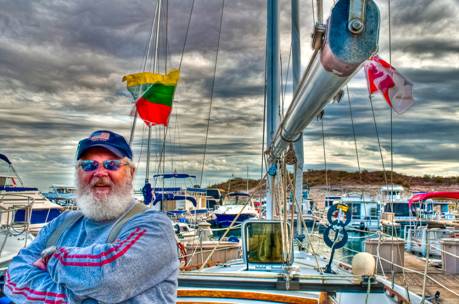
Rimgaudas P. Vidziunas aka "Rim", at Scorpion Bay Marina,
Lake Pleasant, Arizona.
Rimgaudas "Rim" Vidziunas
Owner of Photography by Rimgaudas, Mesa, Arizona
Creator of "Images and Imagination"
This is Rimgaudas' brief autobiography and photo album, from his birth in a German camp for displaced Lithuanians in 1947, fleeing westward with his family until he ended up in Arizona, USA. His story is similar to those of many other Lithuanian-American children who were born while their parents fled Stalin's Red Army. Rim has been back in his parents' homeland and do much to keep the memory alive. Still it is with a certain soreness he answers NO when I ask if he ever heard from the Lithuanian authorities. Not a single letter, no phone call from the home country's leaders. No one from home has told Rim and many other refugee children that they are loved by the ancestral homeland, that they are welcome back now that the communism yoke is lifted off. It seems, unfortunately, that today’s Lithuanian leadership has not done much to restore contact with this most valuable of all resources, namely its own people around the globe.
Here is his story...
My father Juozas Vidziunas escaped Pramedziava, Lithuania during the Soviet invasion of 1941. He went to Germany and there he studied Medicine at the University of Heidelberg. Juozas met Salomeja while he was a student. My mother, Salomeja worked as a hostess at a US Army USO club after the war in Germany. They were given a visa to go to the United States in 1949.
Parents did not talk about their escape from Lithuania to Germany.
I was born in 1947, and when I was two were allowed to come to the U.S. We came here with the ship USS General Sturgis, a US Army troop carrier. After dropping off troops in Germany it would carry refugees back to the United States. We left Bremen Germany, arriving Port of New Orleans 13 March 1949.
The Army Red Cross gave us each $5.00 US dollars and boarded us on a train bound to Los Angeles, California. We were met by my father's brother Juonas Vidziunas and cousin Daiva. We lived with them till 1952 and departed for Chicago, Illinois. Several years later we moved to a small farming community Lexington, Illinois about 120 miles southwest of Chicago. I graduated high school from Lexington, was Senior Class President and graduated University of Miami, Florida, BA History, January 1970.
I returned to the Midwestern United States upon graduation. My love of photography began. On a trip to Arizona in 1974, I fell in love with the desert and moved to Arizona in 1978. I continue my art of photography to this day.
Fri, 4th May, 2012 - Posted by - (15) Comment
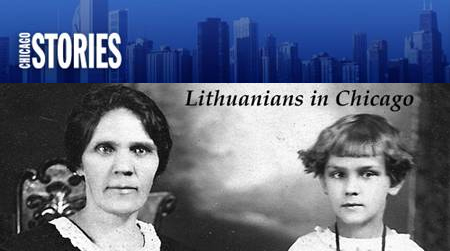
Banner from the website http://www.wttw.com/main.taf?p=1,7,1,1,26
By Frank Passic, Albion, Michigan.
When Lithuania came under Russian control in 1795, the Russians did all they could to “Russify” the Lithuanians, but they were continually met with stiff opposition. During the last half of the 19th Century, oppression increased as parochial schools were closed and Lithuanian printed matter was forbidden. Repressive measures were forced upon the people by the Czar, adding to the misery of the Lithuanian nation which already suffered from famine and mass unemployment.
As a result, thousands of Lithuanians fled their homeland in the late 19th and early 20th centuries prior to World War I. Emigration to America eventually totaled 635,000 individuals, approximately 20 percent of the population of Lithuania! Lithuanians arrived at Ellis Island impoverished, penniless, and unable to speak the English language but full of hope – the hope of freedom, a new life and unlimited opportunity.
Helping the Lithuanian immigrant was the Brooklyn Chapter of the Lithuanian Alliance of America, which gave aid to those at Ellis Island. The Brooklyn Lithuanian-American Citizens Club held a special conference in May of 1911 to plan a strategy for helping those who were scheduled for deportation back to Lithuania. The No. 4 issue of Tevyne (1896) stated, “At present, masses of Lithuanian emigrants are arriving in New York. Every ship from Hamburg brings tens and hundreds of Lithuanians. Many are sent back and the Alliance’s Brooklyn Chapter is working its hardest for the good of those poor peoples…”
In general, the immigrants stayed in New York only briefly, then moved westward to Pennsylvania, where they found employment building railroads and working the coal mines. Numerous Lithuanian organizations, newspapers, and societies were organized in Pennsylvania. These served as the prelude to those that were to be established later in Chicago as Lithuanian immigrants moved westward. Many Chicago societies were actually branches of those that were first established in Pennsylvania.
The first group of Lithuanians came to Chicago in 1870, when eighteen men arrived with a railroad crew. Because of its central location with industry and development, Chicago became the goal of the thousands of impoverished Lithuanian immigrants seeking a new life. Groups of Lithuanians came in 1880 and 1885, with the first colony being established on the North side of the city. After that, the influx of Lithuanians to Chicago grew at an enormous rate. It is estimated that between 1880 and 1914 more than 47,000 Lithuanians settled in the city, congregating in the Bridgeport and Town of Lake districts. By 1923, the Lithuanian population had grown to over 90,000, confirming the fact that Chicago contained the largest Lithuanian population of any city in the world, even more than Kaunas, Lithuania.
According to one story, the Bridgeport section, where many Lithuanians settled, was supposedly named after a Lithuanian immigrant from Tilsit (East Prussia/ Lithuanian Minor) named Ansas Portas. Portas owned land on the south side of the Chicago River at a bridge crossing, and people referred to the area as the “bridge to Portas,” which was later changed to Bridgeport. The Bridgeport section served as the nucleus of the Lithuanian community from the early years of immigration to Chicago through the era of World War I.
Due to the difficulty they had in obtaining jobs, Lithuanian immigrants began to settle around the stockyards where work was available in the slaughterhouses and steel mills. By World War I, approximately 25 percent of the ethnic work force in the industries was Lithuanian, and it is estimated that a total of 100,000 Lithuanians worked in the stockyards in Chicago during their existence. The grim and horrible conditions Lithuanian workers faced there were the theme of the classic novel, The Jungle (1906) by Upton Sinclair.
The Lithuanian contribution to the city of Chicago is significant in several ways. First, it provided the city with an added labor base upon which the city’s industries grew and prospered. Second it accelerated the building of ethnic neighborhoods, adding to the distinctive variety found in the city’s cultural life. Third, it spurred the formation of new businesses and more affluence.
Tue, 1st May, 2012 - Posted by - (3) Comment

By Jennifer Virškus
A nation can be defined by several different characteristics; geographical location, language, a common history, cultural body, or race. The Lithuanian nation is defined by all of these. Lithuania has a language which is unique in the world and a culture that runs deep. It shares more than two centuries of its history with Poland, and few other nations have survived occupation by so many different groups. There are several types of nationalism; primordial, civic, organic, and liberal. Because of the lack of opportunity in Lithuania, young Lithuanians have recently tried to convince themselves that they want to “forget” their Lithuanian culture and move on to a new life in the West, but it is not possible. Lithuanians will always be Lithuanians whether they are in Lietuva or not. This is evident in the Lithuanian-American community, though they are clearly Americans, their Lithuanian identity stays with them. This is because Lithuanian nationalism is both geographic and organic, an entity to which all Lithuanians belong, as parts of a whole and independently of their will, choice or consciousness.
| Jennifer Virškus Jennifer Virškus is a Lithuanian-American freelance writer, photographer, graphic designer, skier, sailor, traveler, and current MFA Writing student at California College of the Arts. While living in Vilnius, she founded the Kalnu Ereliai Ski Team. You can read more of her writing about skiing, sailing, and Lithuania at her blog, One Way Ticket. |
 |
Sun, 29th April, 2012 - Posted by - (2) Comment

Rūta Šepetys and Ellen Cassedy interviewed by Jennifer Virškus
Two new books making a splash in the literary world—Between Shades of Grey by Rūta Šepetys and We Are Here: Memories of the Lithuanian Holocaust by Ellen Cassedy—take place in WWII Lithuania. Though the two women's stories begin in much the same place—Sepetys's grandfather is from a village near Biržai, while Cassedy's great-grandfather hails from Rokiškis only 60km away—the books, and their stories, couldn't be more different. We Are Here is a first person memoir about Cassedy's journey to discover her Litvak heritage while studying Yiddish at Vilnius University. Between Shades of Grey is a young adult fiction novel about a 15-year-old girl who is deported to Siberia along with her mother and younger brother.
Individually, the books have met with incredible success. Between Shades of Grey, which came out in paperback this month in the US, has been translated into twenty-five languages and sold in thirty countries. Only in bookstores for a little over a month, We Are Here is racking up rave reviews at home and abroad. When speaking of the book, which will be released in Lithuania in May, former president Valdas Adamkus said, “This eloquent book can help us to reach out, open our hearts, and rediscover one another in a spirit of mutual understanding.”
Indeed, the need for understanding is a theme in both books, and together, they provide a more complete portrait of a time in history when Lithuania's identity was at its most complex—not only for their readers, but for the authors, too. “I went to Lithuania, hoping to decide who was right and who was wrong; to put people in a column, who was a victim, who was a killer. And then those lines began to blur,” says Cassedy.
Šepetys went one step further, “The intersection that I've experienced [between the ethnic Lithuanian fear of the Soviets and the Litvak fear of the Nazis] is one of regret … People that I've spoken to say that some of their greatest regrets weren't the things that they forgot to pack with them; they were human interactions with people. Something that was said or done, a suspicion or paranoia; but they also explained that those are the casualties of war.”
“The intersection that I've experienced [between the ethnic Lithuanian fear of the Soviets and the Litvak fear of the Nazis] is one of regret … People that I've spoken to say that some of their greatest regrets weren't the things that they forgot to pack with them; they were human interactions with people. Something that was said or done, a suspicion or paranoia; but they also explained that those are the casualties of war.”
- Rūta Šepetys
Sun, 29th April, 2012 - Posted by - (14) Comment
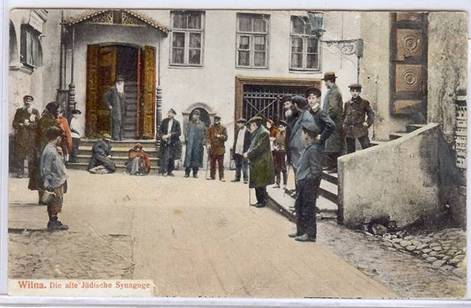
Vilnius, the old Jewish Synagogue.
By Aage Myhre, Editor-in-Chief
aage.myhre@VilNews.com
I have repeatedly been asked, by Lithuanians and others why VilNews, and I as a Norwegian without a single drop of Jewish blood, love Jews so much? Recently I met a Lithuanian-American, well educated and well read, who yet bombastically trumpeted. "You lick the asses of the Jews, Aage."
During my meetings with Jews in South Africa, where 90% of the Jewish population of almost 100 000 are of Lithuanian descent, I have also been asked why I have such great interest in Litvaks.
My answer to all these, has been that I do not love Jews more than other peoples.
But I also tend to add that I am always impressed by people who achieve more than the common herd. Intelligence and wisdom are to me among the most important qualities a person can have, and I have no problem admitting that these are qualities I've seen a lot of among the Jews I have known through life.
As to the Litvaks, they were subjected to an almost total extinction here in Lithuania during the Holocaust. It was an assault and a genocide of an unimaginable scale that we must never forget, and which memory must find its fair balance in the mental as well as in the practical.
Sat, 28th April, 2012 - Posted by - (0) Comment

There are very strong communities of Jews of Lithuanian descent (Litvaks) around the world, especially in Israel, the United States, South Africa, Zimbabwe, Brazil and Australia.
In all these countries they hold top positions in politics, economy, science, culture and society in general.
Their names are frequently found among the Nobel laureates and in many other honorable contexts.
They often lead in matters and innovations that affect and influence us all, wherever in the world we live.
So also in the U.S., where they have been prominent leaders in economics, science and culture since the 1800s. It is, for example, said that Hollywood would not have existed had it not been for the Litvaks.
Litvaks are Jews with roots in the Grand Duchy of Lithuania: (present-day Lithuania, Belarus, Ukraine, and the northeastern Suwałki region of Poland).
Lithuania was historically home to a large and influential Jewish community that was almost entirely eliminated during the Holocaust. Before World War II there were over 110 synagogues and 10 yeshivas in Vilnius alone. Before World War II, the Lithuanian Jewish population was some 160,000, about 7% of the total population. Vilnius (then Wilno in the Second Polish Republic) had a Jewish community of nearly 100,000, about 45% of the city's total.
The reason for the Litvaks’ huge success is likely to be found in the fact that Vilnius through many centuries was considered the Jewish intellectual and cultural capital, with a huge number of teachers and scholars who taught and ruled this tiny community with wisdom and deep knowledge about a large number of disciplines.
Tolerance and interpersonal respect was also a hallmark of this community and for the whole of Lithuania through hundreds of years.
It was this that made Napoleon to name Vilnius as "Jerusalem of the North" when he came here on his way to Moscow in 1812. It is said that Napoleon himself became very surprised on what met him in Vilnius, a city so far away from the European mainstreams and still with a lively Mediterranean mood and life.
Vilnius was the first and only "Jewish city" Napoleon would ever see. He was no doubt aware of the Crusades, Inquisitions, pogroms and laws designed to discourage Judaic life. But here he had found a city, right before his eyes, that was an amazing exception to the rule.
And true enough, the history of the Litvaks is unusual and surprising. It was a history of mostly peaceful coexistence with other peoples and cultures that lasted for more than six centuries. It was a history that spawned an incredible number of eminent Jews, not the least of whom was Elijah ben Solomon Zalman (1720-1797), also known as “The Gaon of Vilnius”.
The "Golden Age of Jewry" in Lithuania started with Grand Duke Gediminas (1275-1341), the empire builder who took a liking to foreigners and Jews whose skills and education were badly needed in medieval Lithuania. In the early 1300's he attracted them to his realm with numerous perks, including guarantees of religious freedom and tax exemptions.
The Jews of Europe responded in droves, and Vilnius became the heralded centre of Jewish culture and learning. There would be synagogues, schools, theatres, publishing houses and the Yiddish Institute of Higher Learning. At a time when others in Europe were effectively illiterate, all the Jews in Vilnius could read and write.
This was so unusual that it provoked the invention of a brand-new word, "Vilner," meaning "an educated man with knowledge." For almost 700 years, the Litvaks became an inseparable part of Lithuanian society, having enriched the country’s economy, culture, science, and education.
Sat, 28th April, 2012 - Posted by - (2) Comment
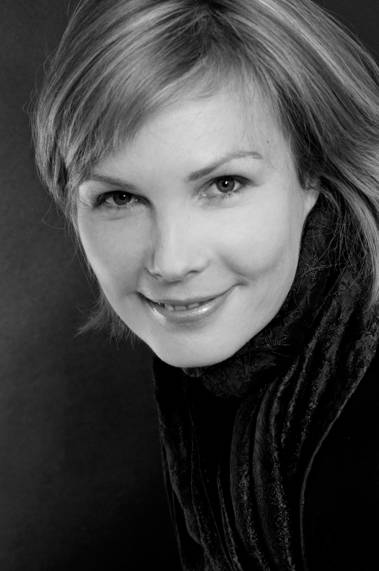
Julija Šukys,
Author of Epistolophilia: Writing the Life of Ona Šimaitė
Julija Šukys interviewed by Ellen Cassedy
In her new book, Epistolophilia, Julija Šukys follows the letters and journals—the “life-writing”—of Ona Šimaitė (1894–1970), a Lithuanian librarian who again and again slipped into the Jewish ghetto of German-occupied Vilnius carrying food, clothes, medicine, money, and counterfeit documents. Often she left with letters to deliver, manuscripts to hide, and even sedated children swathed in sacks. In 1944 she was captured by the Gestapo, tortured for twelve days, and deported to Dachau.
Šukys beckons back to life this quiet and worldly heroine. Ona Šimaitė is a giant of Holocaust history – one of the “Righteous among the Nations” honored at the Yad Vashem memorial in Israel – and yet little known.
Julija Šukys lives in Montreal, Canada. In addition to Epistolophilia, she is also the author of Silence Is Death; The Life and Work of Tahar Djaout. Visit her website at http://julijasukys.com.
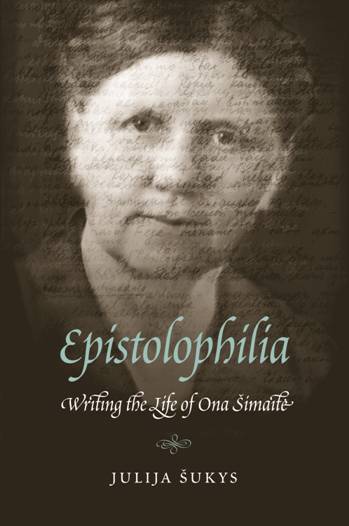
Wed, 25th April, 2012 - Posted by - (14) Comment
IT’S ALL ABOUT LT-MASSACHUSETTS TODAY…
Text & Photos: Jenifer C. Dillis
Founder/Researcher at JCD Photography
Lives in East Bridgewater, Massachusetts
From Brockton, Massachusetts
 Please join me and my eight biological sisters and three nieces, as we venture to The Homeland of our four grandparents. Having grown up as “purebred” Lithuanian-Americans, we 16 siblings are gifted to have parents who share their pride with us. (We sisters left our seven brothers back in The States, while we took our trip in June-July 2007).
Please join me and my eight biological sisters and three nieces, as we venture to The Homeland of our four grandparents. Having grown up as “purebred” Lithuanian-Americans, we 16 siblings are gifted to have parents who share their pride with us. (We sisters left our seven brothers back in The States, while we took our trip in June-July 2007).
Whether it was attending Lithuanian School to attempt to learn the beautiful language, dancing as members of folk dance groups, or learning to play the Kankles, we each have a level of that same pride in our heritage. Though some of us may own more “Lietuva” souvenirs than others, we all are strong, stubborn, determined, and addicted to Kugelis!
Our journey landed us in Vilnius, where the spirits of our ancestors met us warmly. How can I possibly describe the emotion of having landed in the capital of the country we had only ever heard, or dreamed about? We walked the cobblestone streets, window-shopped for Gintaras, and some of us even ventured down alleys. We felt nothing but safe and free in OUR homeland! From the powerful presence of the free-flying flags of Lietuva, to the steeple of St. Casimir’s Church, we were “home.” The locals were familiar faces. We had seen them in our own Lithuanian parish back home.
If being a Lithuanian-American or American-Lithuanian means anything to you, I suggest and recommend a visit to The Homeland. Go shove your feet into the sands of The Dunes, search for that one piece of amber along the rough shores. Pull up a chair at a local bar, and order a round of Svyturys for the crowd. Search the birth records of your ancestors. Touch the doorknob of the Church that your own grandmother may have touched. Look up while walking the cobblestones of Vilnius. Chances are there will be someone on a balcony. And that someone may be your own flesh and blood.
Wed, 25th April, 2012 - Posted by - (3) Comment

Lithuania Hall, Brockton, Massachusetts, 1913
This article was written by JOHN BERNOTAVICZ, BS, MS, PhD (1913-2009) for Lituanus (Lithuanian quarterly journal of arts and sciences) in 1990
On Sunday, April 24, 1988, l drove from Hyannis to Plymouth to pick up Mrs. Florence Melevsky, my sister-in-law, so we could attend the 90th anniversary for St. Rocco-St. Casimir Parish in Brockton. Originally, all we had was a basement church, as l remember it. Now, over the basement towers a huge bell-towered edifice.
The following credentials will establish my family and my roots in this parish.
My father, Mykolas Juozas Bernotavicius from Marcinkonys, Lithuania, was married on June 1, 1905, to Ona Geceviciute from Varėna, Lithuania, by Father M. Peza in the old wooden church on Webster Street. Later, this building became our church hall. Although my parents had four children, l was the only one to survive beyond infancy. Because my birth occurred on St. John's Day, June 24,1913, l was baptized John. On June 11, 1939, l married Amelia Veronica Jermolaviciute (the youngest of seven sisters) in this basement church by Father John Svagzdys. Our two children, John (a graduate of Notre Dame University and Georgetown Law School) and Mary (a graduate of the Georgetown School of Nursing) were christened here in 1943 and 1946, respectively. In addition to the above data, my parents and my wife were buried from this church.
As we descended the steps to the hall, a flood of memories of long ago surged through my mind. Nowhere in sight did l see the confessionals, nor the organ or choir loft, nor any pews or stations of the cross, nor any main altar with two side altars—only a huge expansive area filled with long tables and chairs prepared for a family-style feast for the parishioners and friends of the parish. At one end we saw an hors d'hoeuvres table. Other tables along the sides of the building were lined with pictures, photos, newspaper clippings of past functions, mementoes of other activities and paraphenalia illustrating past history of its parish and people.
During the 1920-1935 era, Brockton, a bustling city of 55,000-65,000 inhabitants, was known as the world's largest shoe manufacturing center.
Wed, 25th April, 2012 - Posted by - (0) Comment
“I will always wonder how many other Lithuanian parishes can match what
the people of St. Rocco's-St. Casimir's has accomplished.”
St. Casimir Church in Brockton closed in 2008
Over the past years, six Catholic parishes in Brockton have closed or merged, making the city one of the hardest hit by the Boston Archdiocese's reconfiguration process. In 2008 St. Casimir Church, a 110-year-old Lithuanian parish held its final service…
Read more…
___________________________________________________________________________________________________
Lithuanian Brockton disappears
Nearly a century after she was born in Brockton’s Lithuanian Village, Helen Savilonis Giovanello still remembers the aroma of Lithuanian bread baking at Kilkus Bakery. She remembers the lush flower gardens grown by Lithuanian immigrants. She remembers her family’s well-tended home at 18 Albert St. and her days at the neighborhood’s Franklin Elementary School.
But most of all, she remembers the solidarity of the people who lived in that northeast section of Brockton. “It was a cluster of Lithuanian people that were all friendly with the church,” says Giovanello, now 98.Those days are over. The Lithuanian Village is but a shadow of the once-vibrant enclave, and the expected closing later this month of the venerable St. Casimir Church may mark the end of the Lithuanian community in Brockton.
Read more…
Wed, 25th April, 2012 - Posted by - (0) Comment
Boston, Massachusetts, July 1, 2012

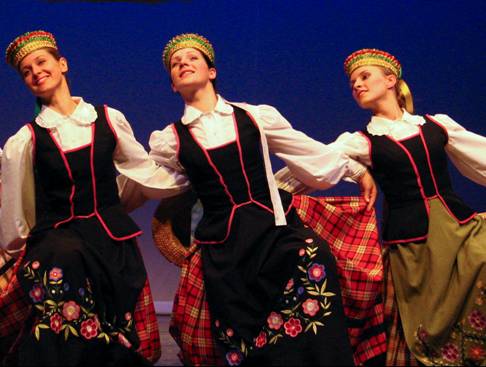
Lithuanian folk dance group of Vilnius Gediminas technical university
The Boston Lithuanian American Community will be hosting as many as 47 Lithuanian folk dance groups from around the world. The dance festival is held every four years and for the first time will be coming to Boston. The festival begins with an entry march, as 1,800 dancers dressed in distinctive folk costumes fill the stadium floor, then together perform intricately choreographed dances, creating a kalaidescope of movement, music and color.
Come experience this celebration of Lithuanian dance and culture!
Learn more at: http://www.sokiusvente2012.org/
Wed, 25th April, 2012 - Posted by - (0) Comment
Slideshow commemorating 50 seasons of Boston Lithuanian Cultural Saturday evenings (Subatvakaris) and 60 years of the National Lithuanian Society of America, Boston Chapter (Amerikos Lietuvių Tautinė Sąjunga (ALTS)). Background singing from the Vilnius University girls choir Virgo performing during the cultural part of the jubilee program, November 7, 2009, at the South Boston Lithuanian Citizens Association, 368 W. Broadway, South Boston, Massachusetts USA.
The slideshow includes pictures of events and the founders at the Boston Chapter's National Lithuanian Society House at 484 Fourth Street in South Boston, MA from the 1950's to 1980's. After selling the building, and a period of inactivity, the Subatvakaris cultural evenings were revived in the 2000's and are now held at the South Boston Lithuanian Citizens Association, 368 W. Broadway, South Boston, MA.
Draugas article (in Lithuanian), http://www.draugas.org/12-03-09boston.html
Mon, 23rd April, 2012 - Posted by - (3) Comment
 Visit: LT NEWS |
||
|
||
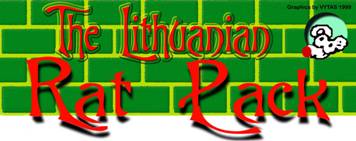 Visit: The Lithuanian Rat Pack |
“In this new media age, there is a growing population interested in Lithuania and its culture. LTnews.net provides a simple, easy-to-access platform with a social media aspect that has re-shaped the way people can seek a topic of interest.”
This write the enthusiasts behind the site and the Facebook page LT NEWS in their introduction to the page. They represent one of many new social media in the United States with Lithuania as the main theme. Combined, these sites have revived a strong, energetic interest in the home country here at the southern shore of the Baltic Sea.
There are many, many more than the four we mentioned above, and there are similar sites in many other countries. Please contact us if you represent one of these sites, and we will eventually put together a more comprehensive overview and presentation here in VilNews.
Mon, 23rd April, 2012 - Posted by - (0) Comment

Linas Johansonas,
LTnews.net Editor-in-Chief
Linas Johansonas, chief editor of Ltnews, think we were too negative in our article about the tomb of President Smetona, where we used the title "No flowers for Smetona." Linas believes that the tomb is visited and honoured by many. To convince us of this, he invited me to Cleveland so I can see with my own eyes.
He also thinks there is more I should do while in Cleveland…
***
Aage, after you visit President Smetona's grave in Cleveland, make sure you visit Cleveland's historic Lithuanian Cultural Garden :)
Lithuanian Cultural Garden in Cleveland Ohio
The Lithuanian Cultural Garden was dedicated October 11, 1936.

Lithuanian Cultural Garden in Cleveland Ohio
www.clevelandpeople.com
Photos from the Lithuanian Cultural Garden in Cleveland Ohio - statues of Vincas Kudirka, Pillars of Gediminas, Jonas Basanavicius, Fountain of Biruta , Maironis
Checkout some of my photos from the LT garden in this photo album http://www.facebook.com/media/set/?set=a.1046292712242.2009191.1073375623&type=3
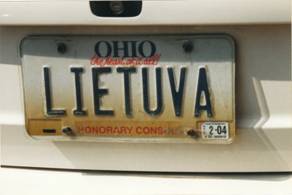
Lithuanians
Photos by: Linas Johansonas
By: Linas Johansonas
http://www.facebook.com/groups/52628882669/

Friends of the Lithuanian Cultural Garden of Cleveland
"One of Cleveland's Cultural Gardens, sponsored by its foreign born citizens. The Lithuanian Cultural Garden is laid out in the form of a huge lyre, which symbolizes the Lithuanians' love for music. The stone work depicts three stages of Lithuanian history. The bust in the center is that of Dr. Jonas Basanavicius, Lithuanian liberator."The Lithuanian Cultural Garden also features busts of Maironis (poet/writer) and Vincas Kudirka (author of Lithuania's national anthem), the Pillars of Gediminas (Gedimino Stulpas), and a fountain dedicated to Lithuania's Grand Duchess Birute.Dedicated in October 1936, the Lithuanian Cultural Garden extends from East Boulevard down three levels to Martin Luther King Boulevard. According to Clara Lederer, in Their Paths are Peace , the "original design was drawn up in Lithuania by Professor Dubinecras, and was modified to fit the boulevard topography by the City Plan Commission of Cleveland." The Lithuanian Cultural Garden’s choices of sculpture reflects how much questions of national identity played into the construction of many of the gardens. ~Dr.M.Tabeau
http://www.culturalgardens.org/federation.aspx
After you visit the LT Gardens, you can stop at the Lithuanian Club at the Lithuanian Community Center for a Svyturys…
http://www.facebook.com/media/set/?set=a.10150236615690337.344774.356431370336&type=3
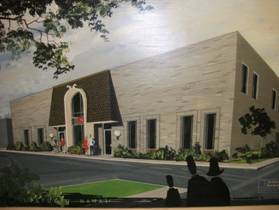
Sat, 21st April, 2012 - Posted by - (1) Comment
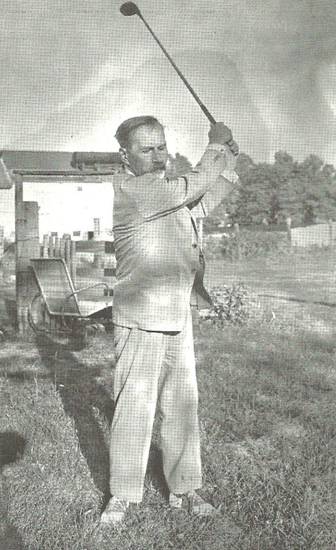 Antanas Smetona golfing in Michigan at the Tabor Farm after he came to the U.S. in 1941, escaping from the Soviet invasion of Lithuania in June 1940 |
||
|
Antanas Smetona (August 10, 1874 – January 9, 1944) was the most important Lithuanian political figure between World War I and World War II. He served as the first President of Lithuania from April 4, 1919 to June 19, 1920. He again served as the last President of the country from December 19, 1926 to June 15, 1940, before its occupation by the Soviet Union. He was also one of the famous ideologists of nationalism in Lithuania.
Lithuania was occupied by Soviet troops in 1940. After the USSR presented an ultimatum to Lithuania in June of that year, Smetona proposed armed resistance against the Soviets. The majority of the government and the commanders of the army did not concur with this proposal, and Smetona turned over the duties of President to Prime Minister Antanas Merkys, and on June 15 he and his family fled to Germany, and then on to Switzerland without surrendering his powers.
In 1941, Smetona emigrated to the United States, and lived in Pittsburgh and Chicago before settling in Cleveland, Ohio in May 1942 with his son Julius' family. While in exile, he began work on a history of Lithuania and on his memoirs. Smetona died in a fire at his son's house in Cleveland, on January 9, 1944, and was buried there. His wife Sofija died in Cleveland, on December 28, 1968, and he also had a daughter, Birutė.
In 1975, his remains were moved from Cleveland's Knollwood Cemetery mausoleum to All Souls Cemetery in Chardon, Ohio.
Sat, 21st April, 2012 - Posted by - (13) Comment
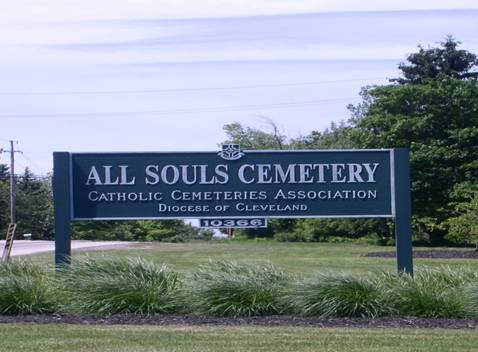
Ohio crypt holds remains of first Lithuanian President,
yet he has been forgotten here in a Mausoleum tucked
away in a Catholic Cemetery east of Cleveland, USA.
By Frank Passic
There are no flowers at his crypt, although the Mausoleum is filled with them on the vaults of others nearby. He was the President, yet you would not know that by reading the simple inscription found upon his nameplate. His image was on a coin, a banknote, various stamps and medals. Yet he has been forgotten here in a Mausoleum tucked away in a Catholic Cemetery east of Cleveland, Ohio, USA.
His body has already been moved once since his death. But his remains haven’t been taken back to Lithuania since Lithuanian independence was restored, unlike the remains of his counterpart, President Kazys Grinius’ were. So his remains lay here in Ohio, far away from the country he loved and served.
VilNews e-magazine is published in Vilnius, Lithuania. Editor-in-Chief: Mr. Aage Myhre. Inquires to the editors: editor@VilNews.com.
Code of Ethics: See Section 2 – about VilNews. VilNews is not responsible for content on external links/web pages.
HOW TO ADVERTISE IN VILNEWS.
All content is copyrighted © 2011. UAB ‘VilNews’.